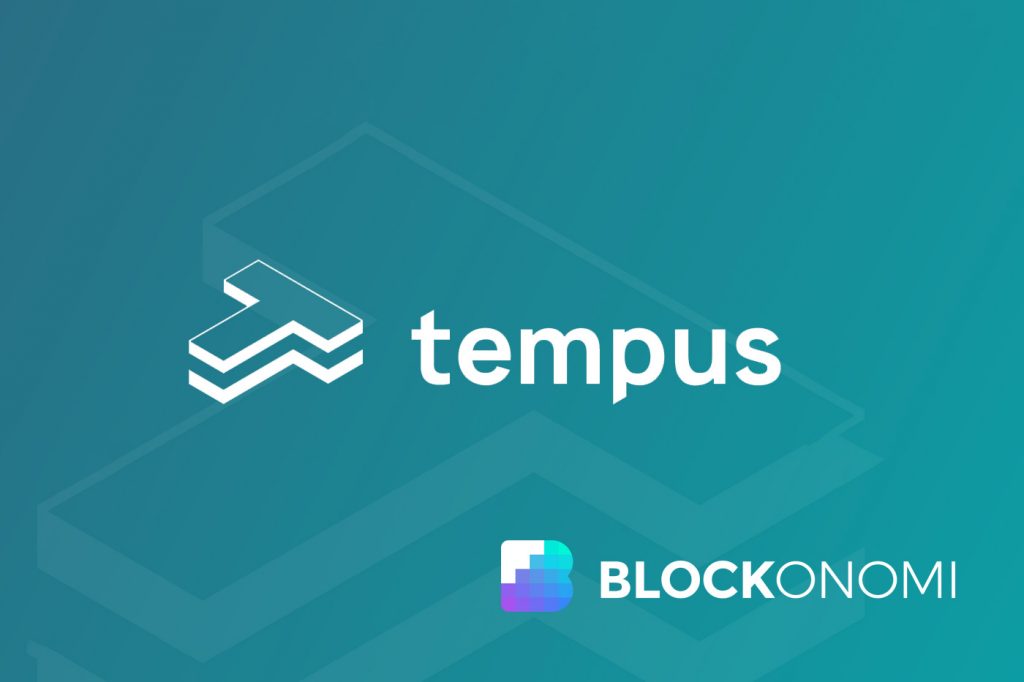Today, more and more investors want to explore blockchain technology and its potential to transform finance. Tempus is here to meet such demands and provide a new way to approach blockchain investments. Blockchain technology has become one of the leading technological innovations and has received a lot of attention over the past decade, particularly in the finance industry.
Holding promises such as reducing fraud and ensuring quick and secure transactions and trades, blockchain technology is transforming everything from payments transactions to how money is raised in the market.
As such, we have seen a boom of blockchain-based finance platforms, the aim of which are to disrupt the traditional banking industry.
What Is Tempus?
Tempus was launched in March 2021 by co-founders David Garai and Djordje Mijovic. David previously worked as an interest rate derivatives lawyer for two large law firms in London and Tokyo. Interest rate derivatives (specifically, interest rate swaps) are the most important derivative product in TradFi, with an outstanding notional of around $800 trillion. Djordje was previously part of the Solidity core team at Ethereum Foundation, where he focused mostly on backend development. Together, the pair set out to create a DeFi-native, capital-efficient version of interest rate swaps. Tempus believes that, as DeFi matures, and hopefully competes with TradFi, there will be a tremendous market opportunity to capture.
Tempus’ mission is to provide the world with a simple and trustless way to attain predictable fixed yields. Tempus believes that DeFi users should be able to remove interest rate volatility from their portfolios or allow more advanced DeFi users to increase exposure to interest rate volatility if desired.
To date, the protocol has successfully raised over $30 million through funding rounds with the participation of some of the leading investors in the crypto space such as Lemniscap, Jump Capital, Distributed Global, GSR, Wintermute, and Tomahawk.
Currently, Tempus can be found mainly on Twitter, Discord, Telegram, and Medium.
How Does Tempus Work?
Most forms of yield farming return a variable rate of yield meaning users can be subject to unpredictable fluctuations in their returns when depositing their assets.
At present, there is no easy capital-efficient way to obtain a fixed yield or otherwise speculate on yields. This is where Tempus steps in.
The protocol offers three different use cases, each of which has a unique value proposition.
Tempus fixes your future yield using any supported Yield Bearing Token such as stETH, aUSDC and yvDai. Users can lock in a fixed rate with selected maturity dates. This eliminates the need to worry about falling interest rates and returns on assets.
Users can also speculate on the rate of future yield of any supported Yield Bearing Token.
Finally, Tempus users can provide liquidity to earn trading fees on top of the existing variable yield on the Yield Bearing Token.

The current pools on Tempus offer short-term maturity contracts.
However, longer-term contracts, quasi-perpetual pools, and leveraged fixed-term contracts on Tempus are features that will be available as the protocol grows.
Tempus currently operates on Ethereum and Fantom, and ultimately aims to become the market-leading fixed income protocol across all major blockchains.
The high gas fees associated with transacting on L1 Ethereum are pricing out a significant portion of DeFi users. Many of these users have migrated over to other chains as a result, one of which is Fantom.
Fantom has seen explosive growth in volume and total value locked (TVL). The interest rates available on Fantom are also significantly higher at present.
Tempus therefore launched on Fantom on Monday 21 February 2022. The appearance of Tempus on Fantom brings fixed yield to Fantom for the first time. Yearn is the first Fantom integration and the integration will allow Tempus to bring fixed yields of over 10% APR to users.
The following pools are currently available on Tempus:
- stETH ~ 3-month term (Maturity Date: 31 March 2022)
- stETH ~ 9-month term (Maturity Date: 30 August 2022)
- USDC ~ 6-month term (Maturity Date: 26 August 2022)
- DAI ~ 4-month term (Maturity Date: 24 June 2022)
- USDT ~ 5-month term (Maturity Date: 29 July 2022)
- YFI ~ 3-month term (Maturity Date: 27 May 2022)
Why Tempus Works
The DeFi lending and borrowing markets have generally to date only been able to offer variable rates based on current market conditions and various other factors, and offering a fixed rate on DeFi has been a challenge.
The existing protocols that have tried to do this are either offering very low to negligible rates or through Liquidity Mining rewards.
Taking inspiration from the bond markets in traditional financial markets, Tempus has designed and built a protocol that allows users to fix their yields or leverage them when they expect interest rates to fall or rise.
This is also one of the major differences from other competitors in the market.
While other competitors such as Element and Pendle have different AMMs including liquidity pools for Capital, Yield tokens, and stablecoins, Tempus has a single simple and capital-efficient custom AMM for Capitals and Yields.
This not only simplifies users’ experience and increases the yield available on the platform, but also allows this to be done in a capital-efficient way.
Tempus is focusing on retail users, institutional investors, staking businesses, DAOs holding significant treasury assets, TradFi businesses offering fixed income on crypto portfolios, and existing and new custodians for cryptocurrencies.
For B2B, Tempus offers fixed income for crypto holders, meanwhile B2C it offers fixed income to risk-averse investors, higher interest rates for the same cryptocurrency as compared to the interest rate offered by the underlying yield aggregating platform, and leveraged yields for degens with investment strategies.
Tempus benefits from a simple user interface and experience as well as a mature crypto community on Discord and Twitter.
How to Get Started on Tempus?
The process to get started on Tempus is quite simple:
Step 1: Go to app.tempus.finance – this will take you to the dashboard where you will be able to manage your yield-bearing tokens and/or underlying assets. You can also change the language of the app by clicking on the ‘Settings’ button.

Step 2: Select the pool in which you would like to deposit your yield-bearing tokens or underlying assets from the pools available on the dashboard. The different pools available on the dashboard show various metrics, including protocol, maturity, fixed APR, LP APR, TVL, balance, and the available to deposit, which shows the total amount of the asset that can be deposited in the pool.
Step 3: Clicking on the ‘Manage’ button will take you to the deposit window for Basic users. This feature allows you to fix your future yield or provide liquidity to the pool to earn additional yield. Users will also get all the information relevant to the pool including the term of the pool, the TVL, the ratio in which the Capital to Yield tokens can be deposited in the liquidity pool, the 7-day volume of the pool, and more.
Step 4: Select what pool you would like to deposit into.
Step 5: By clicking on the ‘Fix Your Future Yield’ button, you can fix your future yield. This button allows you to deposit your yield-bearing tokens to mint an equal number of Capitals and Yields, which can then be traded on Tempus’ custom AMM.
Great Tools for Blockchain Finance from Tempus
With the recent boom of blockchain-based finance platforms, Tempus aims to become one of the market-leading platforms for users who want to explore this technological innovation in the finance industry in order to make an income.
Given the volatility of crypto markets and fluctuates constantly, fixed rates are a safe bet to help hedge against the risk of interest rate fluctuations.
Tempus offers DeFi-native interest rate swaps for the same cryptocurrency, a fixed income offering to risk-averse investors, and leveraged yields for degens with investment strategies.
To learn more about Tempus- just click right here!
The post Tempus: Decentralized Fixed Income appeared first on Blockonomi.





















